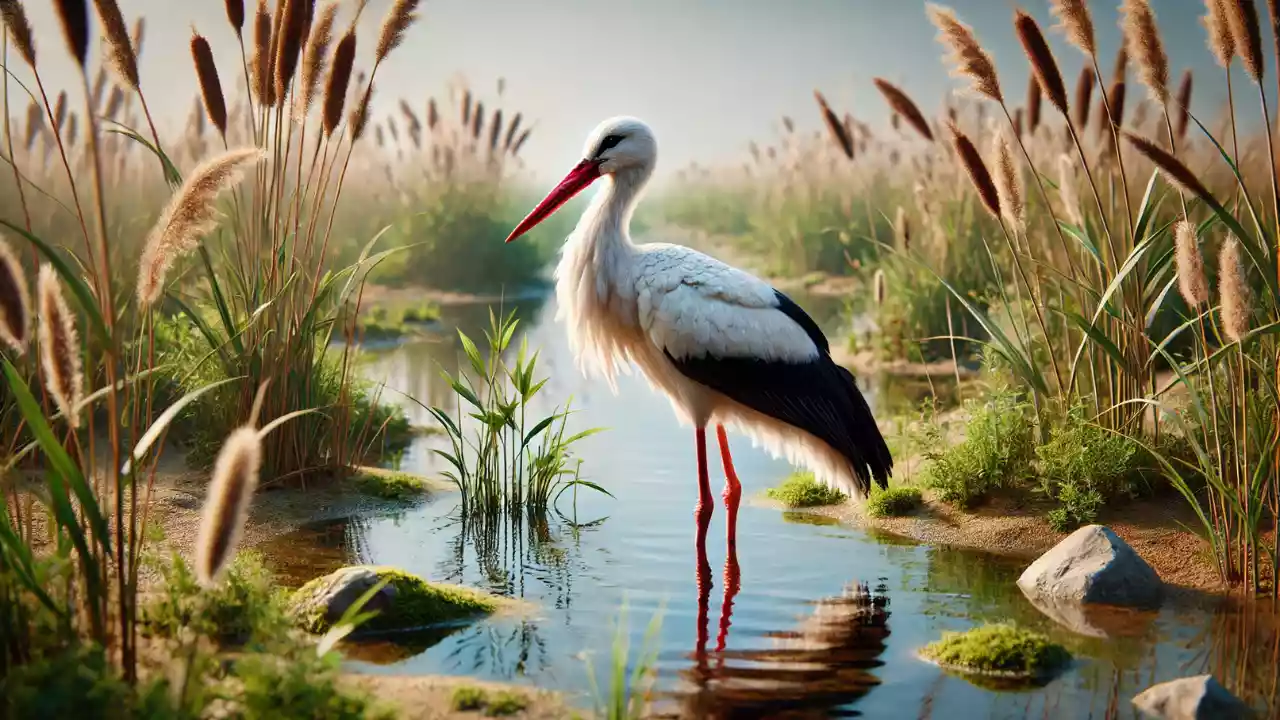Storks are large, graceful birds known for their long legs and distinctive beaks. They are often associated with bringing good luck and are featured in many cultural tales and folklore. When these birds gather, specific collective nouns are used to describe their groups. These terms reflect the unique behaviors and characteristics of storks in their natural habitats. Let’s explore some of the most common collective nouns for storks and their meanings.
Collective Noun for Storks
| Collective Noun | Usage |
|---|---|
| Muster | A group of storks, typically on the ground or in trees |
| Phalanx | A group of storks flying in a V-formation or closely together |
| Flight | A group of storks in flight, emphasizing their graceful movements |
| Flock | A general term for a group of storks, often used for many bird species |
| Swoop | A group of storks diving or swooping in the air, usually during feeding |
1. Muster
Explanation: The term muster is used to describe a group of storks gathered together, often seen resting or nesting in trees or on the ground.
Examples:
- A muster of storks gathered by the lake, standing tall and observing the surroundings.
- During the breeding season, a muster of storks could be seen nesting in the tall trees.
- The villagers were fascinated by the muster of storks that appeared in the fields every year.
2. Phalanx
Explanation: “Phalanx” refers to a group of storks flying in a coordinated formation, often in a V-shape, which helps them conserve energy during long migrations.
Examples:
- A phalanx of storks flew overhead, their wings beating in unison against the blue sky.
- Birdwatchers admired the phalanx of storks as they soared gracefully through the air.
- The migration season brought a majestic phalanx of storks across the region, a sight that captivated many.
3. Flight
Explanation: The term flight is used to describe a group of storks in motion, emphasizing their elegant and soaring flight patterns.
Examples:
- A flight of storks appeared at dawn, filling the sky with their impressive wingspans.
- The children watched in awe as a flight of storks glided effortlessly above the wetlands.
- Photographers often seek to capture the beauty of a flight of storks against a setting sun.
4. Flock
Explanation: Flock is a general term for a group of storks, commonly used to describe many bird species when they gather together.
Examples:
- A flock of storks rested in the field, their white feathers contrasting with the green grass.
- During the migration, large flocks of storks can be seen traveling to warmer regions.
- The bird sanctuary hosted a diverse flock of storks, providing a safe haven for these majestic birds.
5. Swoop
Explanation: Swoop refers to storks diving or swooping in the air, typically when they are hunting or fishing.
Examples:
- A swoop of storks descended on the river, their keen eyes focused on catching fish.
- The storks formed a swoop, diving gracefully to snatch prey from the water’s surface.
- Observers marveled at the swoop of storks, each bird skillfully maneuvering in mid-air.
Conclusion
The collective nouns for storks, such as muster, phalanx, flight, flock and swoop provide vivid and descriptive ways to refer to these birds when they gather in groups. Each term captures different aspects of storks behavior, whether they are resting, flying or feeding. By using these collective nouns, we can better appreciate the social and migratory habits of storks and the elegance they bring to the skies next time you observe a group of storks these terms will help you describe the experience more accurately and engagingly.
